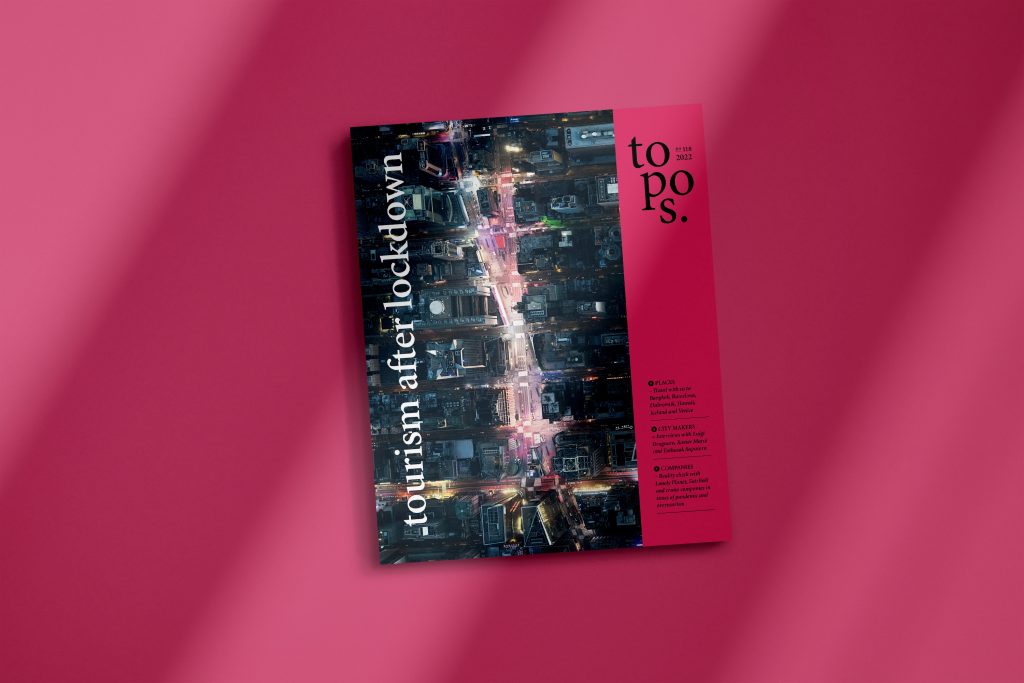Biophilic Cities – topos 128

Billboard
Skyscrapper
Halfpage
The cities of the future are nature-based – or at least they should be if we want to live in them tomorrow. While the building of cities was once a symbol of humanity’s victory over wild nature, today more and more metropolises are trying to bring nature back. Greater resilience, sustainability, quality of life and biodiversity are just a few of the many good arguments for doing so. In issue 128 of topos magazine, we take a look at the concept of the biophilic city, its pros and cons, and we discuss hand-picked examples of cities (including San Francisco (USA), Edmonton (CA) and Wellington (NZ)), that have successfully integrated fauna and flora into their urban structures.
Rats
A pair of rats can produce 15,000 offspring together in a year. For New York City, however, this talent is turning into a huge problem. Two million rats are said to have found a home in the 8.3 million metropolis. This is despite the fact that the Big Apple has been trying to chase the rats out of the city for many years – with alcoholic solutions in which the rodents drown, sterilization pills or even the appointment of its own director of rodent mitigation. Mayor Eric Adams even publicly referred to the rats as “public enemy number one” and said that he hated them. The ironic thing: The mayor himself has already been ticketed several times for rats at his Brooklyn property.
“Wrong animals”?
Just this May, Adams received harsh criticism from the animal rights organization PETA for his treatment of the city’s rats – including an empathy kit for his “vitriolic rat rhetoric”. PETA called on Adams to stop villainizing and trash-talking rats for a problem created by humans and to address this issue with respect and understanding. The case of NYC emphatically shows how quickly people throw their supposed love of animals and nature overboard when it comes to their own comfort – or to particular “wrong” animals such as rats, but also cockroaches, spiders or wasps.
Seven cities
Which brings me to this issue of topos about the idea of a Biophilic City. While the sustainable city approach focuses on energy saving, waste reduction and emission-free transportation, biophilic cities, according to Timothy Beatley’s approach, are places filled with nature that inspire and create a fundamentally positive living space. For Beatley, it is not just about creating green zones in the city, but about building a relationship between people and (urban) nature – and maintaining this relationship in the long term. We are delighted to have Timothy Beatley as a guest contributor to this issue. The official “Biophilic Cities Network” now includes 28 metropolitan areas. We present seven of them in this issue and speak to designers and decision-makers in San Francisco (USA), Edmonton (CA) and Wellington (NZ), among others.
Consequences
The relevance of biophilic cities is obvious. Who could have anything against significantly more nature in our cities? But we should take a look at ourselves before judging others. How many insects have you killed in the past summer months? How many supposed weeds have you plucked or invasive species such as the common lilac planted outside south-eastern Europe and the Middle East? None of us is infallible, but if you call for more nature in the city, you have to deal with the consequences – as well as when human behavior leads to ever new animal invasions.
Incidentally, the latest New York strategy against rats is: garbage cans. Since August 2023, restaurants, grocery stores and bars have had to store their garbage in sturdy garbage cans with secure lids – instead of the black plastic bags that are common in NYC. The following month, the regulation for retail chains followed and since March 2024, all 200,000 businesses in NYC have been obliged to dispose of their waste in this way. Residential buildings will follow this fall. And that brings us to the next topos, which will focus on “zero waste”. Until then, have a good time.












